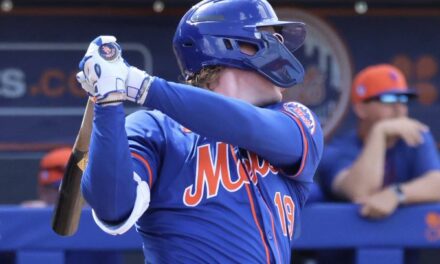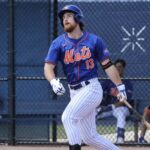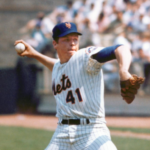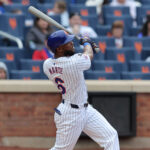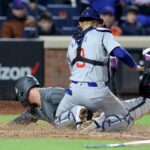Much has been made of the Met organization’s penchant for accumulating shortstop prospects in recent years, a strategy that has paid dividends for many teams in the past. Generally speaking, players capable of handling what is considered the most demanding defensive slot on the fair territory side of the field are usually judged to be able to make the move to any other non-battery position if needed at a later time. If their bat looks to be enough of an asset to justify a starting role, it is assumed that they will find a place on the field where their glove will play effectively enough to hide any shortcomings that may have emerged over time.
Second base, interestingly enough, often seems to be a position in professional ball that is the repository for players who possess those shortcomings, either defensively, as with suspect range or a “fringy” arm, or if their bat won’t play at a more offensively oriented position such as corner infield or outfield. Naturally, there are many examples of second sackers who play brilliantly on both sides of the ball such as Chase Utley, but for every one of these there are a passel of “good glove-no stick” utility types or error-prone keystoners whose power (it is hoped) can offset their deficiencies in the field, a la Dan Uggla. Factors such as the tendencies of the pitching staff (flyball vs. groundball), the team’s home park (bandbox vs. pitcher’s haven), and the makeup of the rest of a team’s active roster can influence what type of players draw the 4 position assignment as well.
Second base has not been a storied position in Met team history. Clearly, Edgardo Alfonzo ranks as the best all-around player on the list, and some past-their-prime luminaries have filled the slot for a time as well (Carlos Baerga, Roberto Alomar), but generally, the Mets have run out a group of players there who could do something offensively and provide enough in the way of defense to keep the word “liability” from being mentioned in the same sentence with their name on a too-regular basis. Of course, the greatest offensive powerhouse to have played second in a Met uniform was Jeff Kent, but he saved his MVP-level performances for his future employers.
Interestingly, now that Daniel Murphy has established himself as one of the better offensive options in the league at the position, many are looking for him to be traded. While the merits of this idea can and have been debated, I thought it would prove insightful to look at the backlog of candidates to replace him that the team appears to be accumulating throughout its farm system.
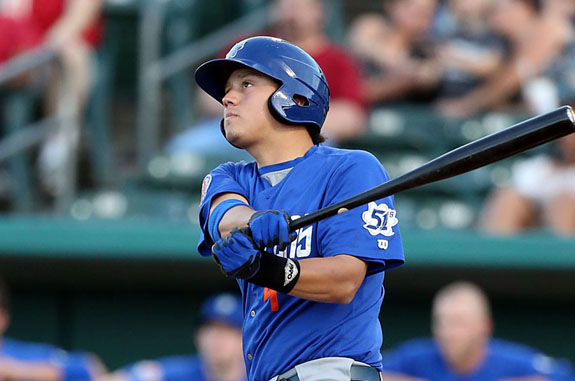
Triple-A Las Vegas
Wilmer Flores continues to make it known that his time has arrived. Yes, his prodigious recent power display has come in the hitter-friendly parks of the PCL, but at age 22 (turning 23 next month), his apprenticeship looks to be overlong. He needs a spot in the big club’s lineup. Murphy’s bat has necessitated his reclassification as a shortstop, but his future appears to be elsewhere in the infield. His minor league numbers may be enhanced by the rarified air of Las Vegas, but he still profiles as at least a .270+ hitter with 15+ HR potential. If that type of production comes with passable defense, most clubs would be thrilled.
Matt Reynolds, while not a name that has been listed among the team’s top prospects, has nonetheless hit his way into consideration over the past season and a half. Another ostensible shortstop, no scouting report projects him there as a regular. He lacks power or elite speed, but having hit above the .350 mark across two levels over half a season and posted a combined OBP of .424, he at least merits some consideration as at least a candidate for a spring training tryout in the leadoff spot.

Double-A Binghamton
Dilson Herrera, who arrived last season from the Pittsburgh organization as part of the Marlon Byrd/John Buck deal that also netted current bullpen component Vic Black, may be relatively small in stature at 5’10” and 150 lb, but has also hit at every level, tallying a .312 career mark across rookie, low A, high A, and now AA levels. At only 20 years of age, his stroke is precocious enough (along with a hint of occasional pop) to intrigue.
T.J. Rivera, another “non-prospect” who went undrafted and signed as a free agent out of college, has done nothing but hit since joining the organization in 2011. In stints at Kingsport, Brooklyn, Savanna, St. Lucie, and now Binghamton, he has batted a composite .346 with an OBP of .392. Like Reynolds, he lacks the added dimension of plus power or speed, and at age 25 is older than is typical for his level, but his numbers demand consideration as a utility player if nothing else. Anyway, even Mike Piazza was only drafted as a “courtesy.”
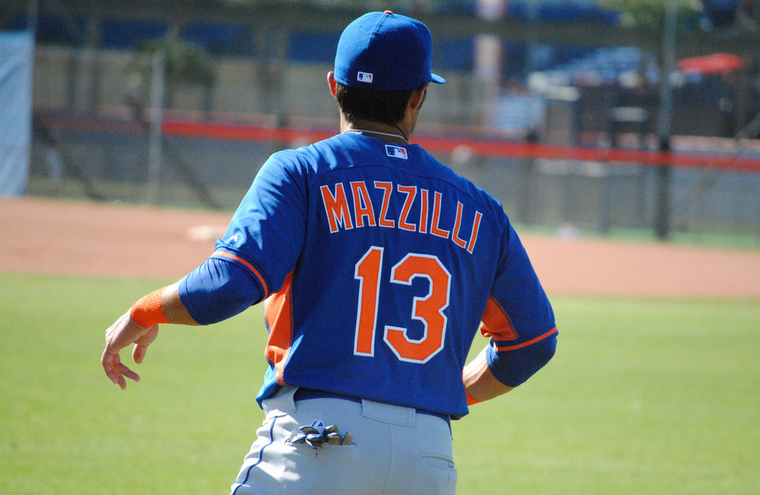
Advanced-A St. Lucie
L.J. Mazzilli, he of the pedigree, has shown a bit of his Dad’s hard-nosed style and a tad more power than the typical middle infielder in the Met organization. The 23-year old is in his second year of pro ball, now manning second for St. Lucie after a mid-season promotion from low A Savannah. Drafted in the fourth round last year out of the University of Connecticut, he had a respectable showing with short-season Brooklyn last year and has improved across the board this year with better numbers in average, slugging, and OBP. Definitely one to watch.
Single-A Savannah
Jeff McNeil, taken 8 rounds after Mazzilli out of Long Beach State, was assigned to Kingsport of the Appalachian League and hit .329 over the course of 164 AB while showing some base-stealing ability with 11 bags in 13 attempts. After showing similar numbers at Savannah this year (.332 with 15 steals in 18 tries over 232 AB) and making the Sally league All-Star team, he was promoted to St. Lucie where so far, he is demonstrating a need to adjust to elevated level of play.
While we all may find ourselves waiting a bit for Messrs. Evans, Cecchini, or Rosario to lay a claim to the shortstop position in Citifield, it appears that at least with the other half of the middle infield combo, a plethora of candidates may thrust themselves into the picture relatively soon. Competition at positions is said to be a good thing. In any event, it appears that the Mets should have no lack of supply of it at second base for years to come.




